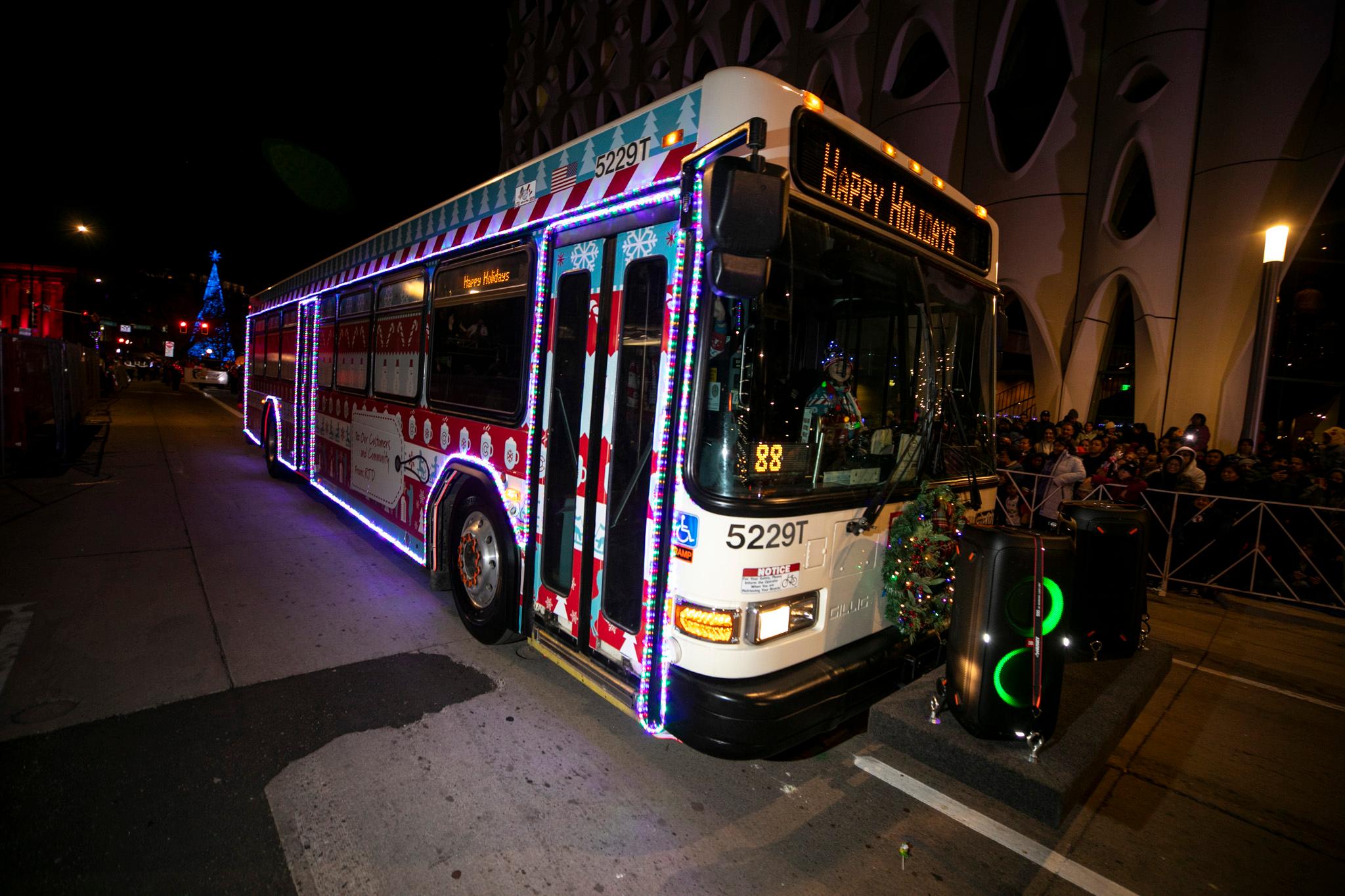The vibrant "La Alma" mural at the rec center in the Lincoln Park neighborhood is a towering ode to Mestizos, people who have both Indigenous and Spanish ancestry, and to Indigenous folks as well. The piece nods to the Chicano and the Mexican-American people who have lived in this area for decades.
But where many people see art, Lucha Martinez de Luna sees something bigger. She sees the mural as a giant textbook outlining some of Denver's Chicano history. And it's a bit of family history: Her father, Emanuel Martinez, painted it in 1978, using donations from local paint stores.
She said her father even painted Denver's first public mural, on a shed in the park in 1970. But it was destroyed.
"The grand plan of the Chicano movement was to start taking over these public places and making them our own," Martinez de Luna said. "'Takeover's' not the best word. But the plan was that we were going to create spaces for ourselves after the major displacement of Auraria. Displacement is our history, over and over and over."
That's why some residents want to establish a historic cultural district in Lincoln Park. There's only one historic cultural district in Denver at the moment: the Five Points Historic Cultural District, established in 2002 and renamed in 2015 to recognize the area's African-American history and cultural significance.
Simply put, a historic district is a grouping of properties or buildings that contributed to the city's history (Lower Downtown is a historic district, for example, because of its important to the city's commercial heritage). A historic cultural district is also a historic district, Principal City Planner Kara Hahn said. They have the same ordinance requirements and application methods. But a historic cultural district recognizes the culture of a certain community.
The city's Landmark Preservation Office last year updated its rules to allow culture to be a criteria for places in the city that could be deemed historic landmarks or districts. This allows more buildings or places that could have cultural significance to certain people and who have been historically underrepresented, like people of color or LGBTQ people, to be submitted as landmarks.
Councilwoman Jamie Torres, who represents the area where the new historic cultural district in Lincoln Park would be located, said its boundaries have yet to be set.
But it would most likely include La Alma Lincoln Park and expand eastward to encompass homes along Mariposa Street and other parts of the Lincoln Park neighborhood.
La Alma-Lincoln Park Neighborhood Association member Fatima Hirji said the idea for a cultural district started in 2016 after residents raised concerns about older homes being demolished and developers flipping homes. Formal meetings informing residents about the project started last year; Hirji said by and large, most attendees backed the idea.
Lincoln Park has historically been a working-class neighborhood since its founding in the 1870s, and the park has been an anchor for Chicano culture over the years. According to a 2018 presentation from the neighborhood association, seven structures built in the 1870s are still standing in the area, and the neighborhood has one of the highest concentration of homes built in the 1880s in Denver.
"This area has had an amazing history, not only because it's kind of the beginnings of Denver, but its relationship to the whole Chicano movement," Hirji said.
Hahn said a historic cultural district has its own set of custom design guidelines so that the neighborhood's character is preserved. So if an application for Lincoln Park is successful, Hahn said special guidelines would be created for it. She said there's a community working group (Hirji's in it) that's started figuring out what those guidelines would look like.



Martinez de Luna, an archaeologist specializing in Mesoamerican cultures and the director of the Chicano/a Murals of Colorado Project, grew up in the projects around the park.
She said her parents were active in the local Chicano movement, which saw its heydays in the 1960s and 1970s. The civil rights movement called for social change here and in other parts of the country, fighting against unequal treatment in schools and police use of force and for labor workers' rights.
Martinez de Luna said murals like the one her father painted helped create excitement and a sense of place for residents.
"What's really sad is the cultural institutions here have never celebrated or appreciated our artists," Martinez de Luna said. "And that's what it comes down to."

Take, for example, the former home of Sisters of Color United for Education on 8th Avenue. The building had a mural, "Huitzilopochtli," painted by local artist David Ocelotl Garcia in 2009. But when a marijuana dispensary leased the building, Torres said the mural was erased with white paint without input from the community.
"It gutted me when I saw it painted over," Torres said.


The neighborhood has historically had a large Latino population, which grew after an urban renewal project in Auraria forced largely Latino and working-class residents to move there and other neighborhoods, such as Sun Valley. The presentation from the neighborhood association representing La Alma Lincoln Park said Chicano activists trying to preserve Auraria moved their headquarters to Lincoln Park.
Torres said she expects some residents might not support the cultural district, since the designation would limit exterior modifications of homes, and any renovations would require approval from the city's Landmark Preservation office.
"What I'm hoping folks gravitate to is the intentionality behind what we're trying to protect and a story that we're really trying to allow to be told in Denver moving forward," Torres said. "The Chicano movement helped build Denver."











